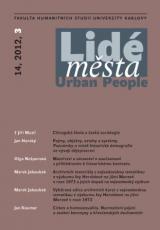Pojmy, objekty, vztahy a systémy
Poznámky o místě historické demografie ve vývoji dějepisectví
DOI:
https://doi.org/10.14712/12128112.3503Klíčová slova:
Sociology - history of, Czech demography, historical demography, historiographyAbstrakt
In the 1960’s and 1970’s, historical demography freed itself from the grip of its traditional explanation of demographic phenomena based on economic factors (J. Meuvret, P. Goubert), especially thanks to J. Dupâquiere and, in Czechoslovakia, L. Kárníková. Constituted by its own heuristics and methodology (L. Henry), it began to be interested in family structures (P. Laslett, M. Mitterauer). In Czech historiography, demography in the 1960’s-80’s symbolised a productive means of cushioning tendencies of the dogmatic use of Marxism (L. Kárníková, P. Horská, E. Maur and others). Its role in our environment wasn’t much different from that of its standings in Western European historiography, where it also could serve as a counterweight to strictly economic explanations. The fact that demography established itself as an independent science with its own terminology and methodology allows it to now – after the “cultural revolution” – assuage the excessive emphasis placed on the “emic” approach; also, as one of the most exact historical disciplines, it serves as a source of adequate arguments against radical versions of narrative and linguistic criticism of historiography. The explicative success of some historic-demographic models should not lead to the nominalisation of historical demography, however. If it is successful in this effort, it can then greatly contribute to the ability of understanding sociocultural reality also as a plurality of relatively autonomous systems, found in anthropology, history, sociology and to the demography of contemporary populations.
Stahování
Publikováno
Jak citovat
Číslo
Sekce
Licence

Tato práce je licencována pod Mezinárodní licencí Creative Commons Attribution-NonCommercial-NoDerivatives 4.0.


